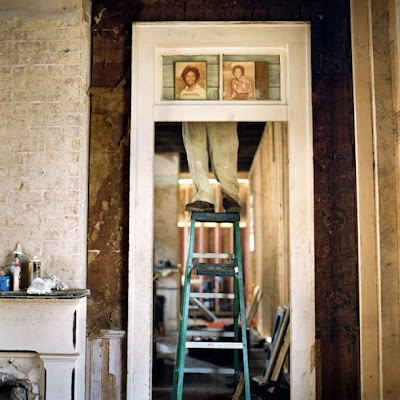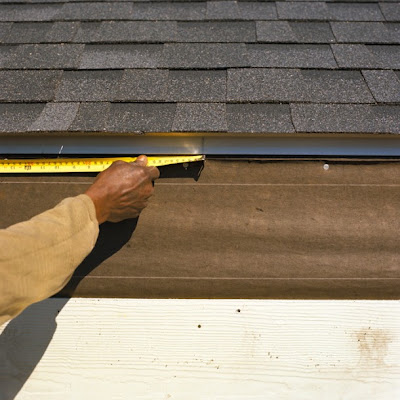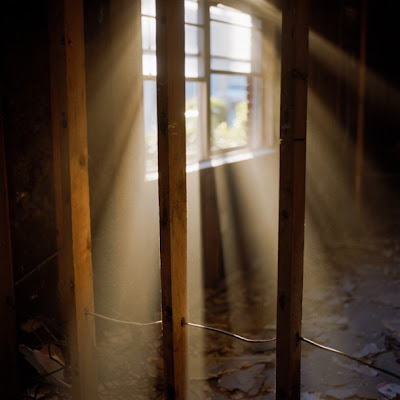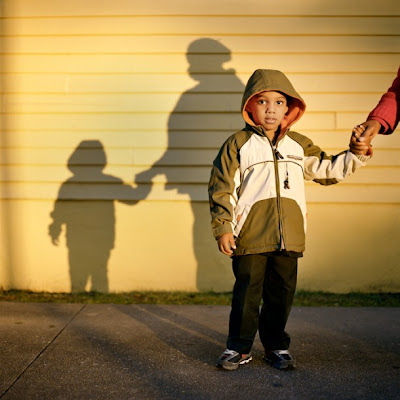The August issue of a Korean photography magazine called "
Monthly Photography" in which I was interviewed just came in the mail. There is a 12 page spread, spanning many years of my photography career. I don't speak or read Korean but have the English translation which I thought I would share.

MT ~ When and how did you first start your career as a photographer? (What motivated you to become a photographer? On your website, you stated that you have practiced clinical social work for 35 years.)
JFA ~ I have been a part time practicing clinical social worker for over 35 years. When my youngest child began grammar school and some time freed up, I began taking art classes and decided to try photography as I had just purchased a new camera in preparation for a trip to South East Asia. At the start of the class I did not really understand the nuances or poetic potential of photography. I had an exceptional teacher, Richard Olderman, who taught me to see with my heart. I learned over time that the camera was just another tool for expressing oneself.
MT ~ Where and why did you shoot the ‘Burn’ series? How long did it take you to finish the series? Looking at the series works, you must’ve been working while the prairie was still burning, and that seems very dangerous. What was the most difficult thing while working on this series? What would you say the subject of this series is? What motivated you to choose this subject for your work?

JFA ~ The seeds of inspiration for The Burn series was years in the making. I have always been attracted to the mysterious qualities of smoke and fire. I remember passing an open field of burning fire while traveling in Mexico. I had wanted to photograph then but the circumstances at the time did not allow it.
In the fall of 2008 I was attending an artist residency at Ragdale in Lake Forest, Illinois. Ragdale is situated on acres of beautiful prairie land. While I was there the restoration ecologists were doing a small controlled burn. Controlled burns are crucial to the restoration of natural habitats. The burning helps reduce non-native vegetation that can crowd out native plants, allowing sunlight to reach very young native plant seedlings. I began talking to the ecologists and inquired about photographing with them. They said that would be fine but I would need to wait until the spring, as the controlled burns were finished for the season.
The following spring, in early April, I called them. As fate would have it the restoration ecologists were heading out to do their first burn that very day. I was elated....and yet...it was also the first day (actual hour) of my sister's first chemotherapy treatment. She had been recently diagnosed with ovarian cancer. The Burn was photographed with my sister in my heart and in my mind. There are many parallels between the prairie burn and the chemotherapy. The burning of the brush or application of the chemotherapy clears the dead underbrush/cancer cells, making way for new healthy growth.
This series has been physically and emotionally taxing for me to produce. After 3-4 hours of photographing in the smoke and fire, I am greatly fatigued and drained. I wear special clothing because the smoke saturates everything. It often takes months for my camera equipment to be smoke free. While I am photographing, I always dedicate the work to my sister. It has been a blessing to have this project to focus on while my sister is simultaneously going through her chemotherapy.
MT ~ Reading your statement about ‘Burning’ on your website, "While accompanying restoration ecologists on prescribed prairie burns, _I am drawn to the ephemeral quality of a single moment _when life and death do not seem opposed to each other, _but are parts of a single process to be accepted as a whole" you seemed to express part of your own grasp about ‘life’ through this series. Would you tell us more about what you have realized about life while you’ve been working on this series?
JFA ~ I have spent much of my photography career wondering about the larger questions of life....how did we all come into being, how do we leave this world and what is the meaning of life. I have used the camera as a tool to try to address these issues. By drawing on my life experiences that includes raising a family, extensive travel and having a clinical social work practice, I am able to come to a better understanding of the life/death question. You can't have one without the other, just like you need to the dark to understand the light. If there were no darkness, light would not exist.
Death is one of the great mysteries that face us all. I do not think one can really live fully without embracing death and dying. By observing the natural world I am able to see the cycle of life more clearly and am attracted to images that reference both life and death in one image.
MT ~ Tell us how you first began working on ‘Katrina’ series. What motivated you to go to Katrina? Looking at the gruesome scenes of Katrina, I would say I could sense part of your feeling while shooting these scenes. Tell us more how you felt while working on this series.
JFA~ Like all who watched the tragedy of human suffering unfold for days on end following Hurricane Katrina, I felt a profound sense of helplessness. This feeling led me to volunteer my skills as a clinical social worker. I had no idea how my expertise would be used. All I knew is that I would be on a team of sixteen mental health professionals from across the nation.
I was assigned to a program called “Look and Leave” organized by the City of New Orleans. The program was designed to provide the evacuated residents of the Lower Ninth Ward, then scattered over forty-eight states, with an opportunity to return and view their homes for the first time since they fled the storm.

By the end of my first day serving on the “Look and Leave” program and viewing the remains of the devastated community, I felt physically ill. Following three days and seven bus trips, I had an unrelenting “Katrina cough” along with a pounding headache. The physical and emotional fatigue was so pervasive that I had to leave the site. This was a turning point for me. Within an hour of returning to the hotel room, something within me shifted and I knew I needed to do more . . . . I decided to photograph what I was seeing, with the hope of helping in a more concrete way by giving others visual access to my experiences.

MT~ Did you intend to deliver any message to the audiences through your work of Katrina? If yes, what was it?
JFA ~ On the last night of my first trip to New Orleans, there was discussion with members of the relief team about how we might be ambassadors for the people we served by keeping their stories alive and their needs in focus.
Our natural instinct is to try to generalize any experience. To do so about my post-Katrina experience would be unfair to us all. During the time I spent in the Lower Ninth Ward, I encountered feelings of frustration, anger, fear, helplessness, shock, despair, hope, optimism and love, both my own and those of the residents. The best and worst of humankind were revealed, as it often is in such extreme situations. I saw people looking to profit from the misfortunes of others and people who showed boundless generosity toward complete strangers.
I was privileged to be with families at an intimate and critical time, a time when daily concerns receded and what was most vital rose to the top. I learned so much from the people I worked with. Their strong sense of faith sustained many. But, most importantly I learned that what is essential in life is not where we live, where we work, what we own, or how much money we make, but how well we love and treat one another.
MT ~ Since you have worked as a social worker for more than 35 years, you must’ve engaged a lot with people and I think most of your work subjects are reflecting stories related people, human beings. However, it is interesting that in most of your works, figures are excluded but still show the trace of people’s lives. What do you think? What did you intend from not showing figures on your works?
JFA ~ Much of my early work from Mexico included street photography. There was a time when I was comfortable with shooting people whom I did not know. Then I became more self conscious about it. I guess you might say I became more shy. I am no longer comfortable taking people's photographs without their permission. In order to do a really in depth project with people, you need to spend a lot of time with them. The commitment is intense. I did do that with a woman who was undergoing breast cancer. In the end she felt the photographs were too revealing and did not want them exhibited. The photographs are really beautiful but will probably never be seen. Maybe that has something to do with it...It really takes a toll on me to dive deep into other peoples lives.
MT ~ Your first and only book ‘Look and Leave’ has achieved a lot of attention from American media. What kinds of works are included in this book? Please introduce about your book to our readers in Korea.
JFA ~ The photographs in this book were taken at time when I was in deep mourning for the residents of the Lower Ninth Ward and for our nation. I felt like a walking container for all the grief and sorrow that I absorbed while trying to support the residents as they returned to their homes. It is through this “lens” that the images were made. One question that has often been asked of me is, “Why are there no people in the photographs?” As a social worker, I felt it would be unethical to intrude on the personal lives of the families as they were trying to cope with their losses. When I did decide to photograph, it was with the conscious decision to do it before or after I reported to the “Look and Leave” site, thus avoiding any ambiguity between my professional roles as a clinical social worker and a photographer. I discovered that the potency of these photographs is due, in part, to the merging of the two professions at the moment the shutter was released.
MT ~ Mourning Light, Chiapas, and the first part of Mexico series look like you photographed out of framed photographs. Please explain about work process of these series and the reason why you have chose this manner of shooting photographs. What kind of effect did you seek?
JFA ~ I have always been interested in mixed media as a means of creating more luminosity, mystery and surface in the photograph. I applied beeswax on the surface of the Mourning Light photographs as a way of creating this effect.

The Chiapas series was created as a response to having visited the San Juan Chamula Church, just outside of San Cristobal, Mexico. I was not allowed to photograph inside the church but made images of the exterior and the surrounding areas. When I came home and began editing the work, I realized that I could scan objects that I had collected from various trips to Mexico and combine them with the images. This is what I did with this body of work. It all just came together with little thought. One of those wonderful moments that rarely happens! Adding the bees wax was another way of enhancing the mystery and giving the work more depth.

In my newest work from Mexico I am transferring xerox color copies onto a gold leaf prepared wooden panel and then pouring resin over the image. It becomes much less photographic and more about texture and light. The luminosity of the work is extraordinary and by doing the transfer, I loose some of the detail of the image. The viewer is forced to fill in the missing pieces or, even better, spend more time in wonder.

MT ~ ‘Visitation’ series look different from your other work series. This series seem the only one that you had set the stage and directed the scene with a garment while other series are not. What are you trying to talk through ‘Visitation’ series?
JFA ~ This work was inspired by a dream and a painting that referenced flying. This work addresses the non material, spiritual world; what we don't know but what could be.

I have always loved fabric and was a quilter for years before I became a photographer. I live on the shores of Lake Michigan and would always wait for the perfect weather conditions to shoot this work. The wind, the light and the cloud cover needed to be just right for it to work. For 2 years I would carry a 15" x 15" piece of fabric with me. Many, many images were taken but only a few worked artistically.
MT ~ I would say many of your works are close to documentary or topographic works except ‘Visitation’ (it is close to conceptual work to me). How would you categorize your works?
JFA ~ I think it is difficult to categorize my work as I am constantly changing and evolving. My photographic images reflect my curiosity about life and there is a freedom I feel with the photography in that there is no one I need to please, but myself.
It has always been "off limits" to others in that I shy away from commissions or commercial work. I am not interested in "branding" or having a specific style. I am only interested in giving expression to my inner voice.
MT ~ What are the most important sources for you to get inspirations for your works?
JFA ~ I think the combination of my life experiences and my observations on the bigger questions of life have been the driving force behind much of what I photograph. There is a collective unconscious that we all tap into. It doesn't really matter what country you live in, what race you are or what language you speak. We are all made from the same cloth and want similar things from our life. We are all born and we all die and in between we hopefully find love and meaningful work. I love the quote from Joseph Campbell..."The privilege of a lifetime is becoming more of who you are." I am still working on this.
MT ~ Tell us more about your technical know-how. What kind of camera do you use? Are these all film works or digital? Do you print by yourself?
JFA ~ I started the with 35 mm camera then moved to a hasselblad medium format camera for years. I had a darkroom in the basement of my house and I would do all my own printing. Then came Katrina. I had not planned on doing any serious shooting when I went there and only brought my Canon Rebel XT. Prior to that I had never worked digitally. I now use a Canon 5D and do all my own printing on the Epson 4800. I have also used the holga camera, which I adore.
MT ~ You are working in both black and white and color. How do you determine to work either color or B&W on each subject? What kind of effect do you purpose by choosing one?
JFA ~ I had only worked with b/w film up until Katrina when I shifted to color. I really like both and I think the project dictates the direction I go in. I just want to create the strongest image possible.
MT ~ What are you currently working? Have you started any new work series? What’s your plan?
JFA ~ I have been deeply disturbed by the oil spill that just happened in the Gulf of Mexico. I have been reading about the devastation to so many life forms. I am working on a conceptual body of work that will address the vulnerability to human life that is caused by risky drilling practices and speak to the broader issues of protecting our earth. There has been so much finger pointing but really, we are all responsible and we all need to find a solution not just to this spill but to all environmentally compromising practices worldwide. Probably by the time this article goes to print, the work will be completed.
I will also continue working on The Burn, which is an ongoing project.
MT~ What’s your goal being as a photographer?
JFA ~ Interesting question. I really don't have any goals as a photographer per say. I am interested in making the world a better place and have found the camera to be a good tool for that. I will continue to address social and spiritual concerns as they arise. I am also really enjoying mentoring other photographers. I have a monthly critique group in which I am able to help others realize their own vision. It is really fulfilling to be part of other people's growth and development.
 Burn No. 49
Burn No. 49  Burn No. 45, included in the group juried show, "Fantastic Landscapes," gallery 310 conTEMPORARY @ 310 S. Michigan, Chicago, August 2nd - September 30, Reception, September 9th from 5-8pm.
Burn No. 45, included in the group juried show, "Fantastic Landscapes," gallery 310 conTEMPORARY @ 310 S. Michigan, Chicago, August 2nd - September 30, Reception, September 9th from 5-8pm.




























